 You polish your writing, imagining your audience. You read it over. Out loud. Does it say exactly what you want it to say? You have a friend read it to you. Impressed, she says, “You should submit this to contests. Put yourself out there. Get some recognition for your work.”
You polish your writing, imagining your audience. You read it over. Out loud. Does it say exactly what you want it to say? You have a friend read it to you. Impressed, she says, “You should submit this to contests. Put yourself out there. Get some recognition for your work.”
Maybe you leap at the idea. Maybe you hesitate. After all, it’s more work. Besides, it makes you feel vulnerable. There’s almost always a fee and you’re guaranteed nothing. Why bother with contests when the judge isn’t an agent or editor who could take you on as a client?
I’ve run contests for Writer Advice, www.writeradvice.com since 2006 and for the Women’s National Book Association since 2019. I’ve been a judge for Story Circle Network and a NorCal organization seeking local books. I’ve seen a huge range, and this organization gets polished submissions. Their award will carry prestige.
Placing in a writing contest is a huge boost to your work. You all know that acceptances mater. No need to elaborate on that. Here are some other perks you might get:
- It gives you a chance to see how your work fares in the world.
- It gives you exposure. Contest judges know people. Maybe they’ll make a referral to an agent.
- Contest winners usually get published. Published online? Share the link with agents, editors, and anyone who might be interested.
- Winners get paid. That’s usually the reason that contests charge fees. Those who run the contests need to cover expenses.
- The biggest payment, though, is the boost to your self-esteem. Who couldn’t use a little of that?
- There’s also the matter of name recognition. Wouldn’t you like to be Caitlin Contestant, winner of WNBA-SF’s Effie Lee Morris Contest?
Wouldn’t you like to share your story with the world? Contests can help you do that. This year’s judges are eager to read your work. Learn more at https://wnba-sfchapter.org/2021-effie-lee-morris-contest-get-ready/. We’ll be accepting submissions until April 1, 2021.
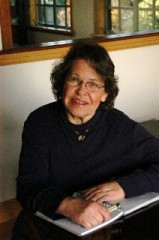
Lynn Goodwin owns Writer Advice,www.writeradvice.com. Her YA novel, Talent, republished on November 1, 2020 by Koehler Books, won some awards. She’s editing the sequel, Ground Rules. Her memoir, Never Too Late: From Wannabe to Wife at 62 also won awards. Visit https://writeradvice.com/books-by-lynn/.
Her flash fiction has been published in Flashquake, Nebo, Cabinet of Heed, Murmur of Words,100-Word Stories, and Ariel’s Dream. Other works have appeared in Hip Mama, The Sun, GoodHousekeeping.com, PurpleClover.com, and elsewhere. She is an editor as well as a writer. She lives her energizer-bunny husband and their exceptional terrier.

 Wooden spoon puppets can create holiday magic.
Wooden spoon puppets can create holiday magic.  Kate Farrell,
Kate Farrell, 
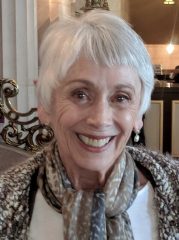 Kate Farrell is our host and facilitator. Kate is a storyteller, author, librarian, founded the Word Weaving Storytelling Project and published numerous educational materials on storytelling. Farrell’s new book, a timely how-to guide on the art of storytelling for adults, Story Power: Secrets to Creating, Crafting, and Telling Memorable Stories, was released in June 2020.
Kate Farrell is our host and facilitator. Kate is a storyteller, author, librarian, founded the Word Weaving Storytelling Project and published numerous educational materials on storytelling. Farrell’s new book, a timely how-to guide on the art of storytelling for adults, Story Power: Secrets to Creating, Crafting, and Telling Memorable Stories, was released in June 2020.  Sheryl J. Bize-Boutte is a Pushcart Prize nominated author. Her second book, All That and More’s Wedding, is a collection of fictional mystery/crime short stories. Running for the 2:10, a follow-on to A Dollar Five delved deeper into her coming of age in Oakland and the embedded issues of race and skin color. Betrayal on the Bayou, published June 2020, is her first novel. Website:
Sheryl J. Bize-Boutte is a Pushcart Prize nominated author. Her second book, All That and More’s Wedding, is a collection of fictional mystery/crime short stories. Running for the 2:10, a follow-on to A Dollar Five delved deeper into her coming of age in Oakland and the embedded issues of race and skin color. Betrayal on the Bayou, published June 2020, is her first novel. Website:  Humaira Ghilzai is a writer, speaker and Afghanistan Cultural Consultant. Humaira opens the world to Afghan culture and cuisine through her wildly popular blog,
Humaira Ghilzai is a writer, speaker and Afghanistan Cultural Consultant. Humaira opens the world to Afghan culture and cuisine through her wildly popular blog,  Mary Mackey is an award-winning novelist and poet with fourteen novels and eight collections of poetry. Mary became a writer by running high fevers, tramping through tropical jungles, dodging machine gun fire, being swarmed by army ants, making catastrophic decisions about men, and reading. Website:
Mary Mackey is an award-winning novelist and poet with fourteen novels and eight collections of poetry. Mary became a writer by running high fevers, tramping through tropical jungles, dodging machine gun fire, being swarmed by army ants, making catastrophic decisions about men, and reading. Website: 
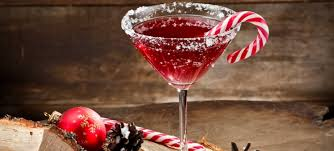

 As a consultant and professor of strategic management,
As a consultant and professor of strategic management, 


 Sharifah Hardie is a business consultant, talk show host and influencer. Sharifah was a Long Beach City Council Candidate in the 2020 March 3rd Primary Election and is a Diversity, Equity and Inclusion Expert. With over twenty five years of business experience, Sharifah Hardie has positioned herself to become one of the top executives in entertainment, business, politics and a person on the rise. Sharifah is the author of Signs You Might Be An Entrepreneur – How to Discover the Entrepreneur in You
Sharifah Hardie is a business consultant, talk show host and influencer. Sharifah was a Long Beach City Council Candidate in the 2020 March 3rd Primary Election and is a Diversity, Equity and Inclusion Expert. With over twenty five years of business experience, Sharifah Hardie has positioned herself to become one of the top executives in entertainment, business, politics and a person on the rise. Sharifah is the author of Signs You Might Be An Entrepreneur – How to Discover the Entrepreneur in You Lyzette Wanzer’s work appears in over twenty-five literary journals. She is a contributor to The Chalk Circle: Intercultural Prizewinning Essays (Wyatt-MacKenzie), The Naked Truth, Essay Daily, and San Francisco University High School Journal. A three-time San Francisco Arts Commission and Center for Cultural Innovation grant recipient, Lyzette serves as Judge for the Soul-making Keats Literary Competition Intercultural Essay category. She is currently helming an anthology entitled Trauma, Tresses, & Truth: Untangling Our Hair Through Personal Narrative.
Lyzette Wanzer’s work appears in over twenty-five literary journals. She is a contributor to The Chalk Circle: Intercultural Prizewinning Essays (Wyatt-MacKenzie), The Naked Truth, Essay Daily, and San Francisco University High School Journal. A three-time San Francisco Arts Commission and Center for Cultural Innovation grant recipient, Lyzette serves as Judge for the Soul-making Keats Literary Competition Intercultural Essay category. She is currently helming an anthology entitled Trauma, Tresses, & Truth: Untangling Our Hair Through Personal Narrative. Sumbul Ali-Karamali, a former corporate attorney with an additional degree in Islamic law, is an award-winning writer and speaker. She grew up in California, answering questions about her religion, which is why her books engagingly introduce readers to Muslim beliefs and practices and include The Muslim Next Door: The Qur’an, the Media, and that Veil Thing and her just-released Demystifying Shariah: What It Is, How It Works, and Why It’s Not Taking Over Our Country.
Sumbul Ali-Karamali, a former corporate attorney with an additional degree in Islamic law, is an award-winning writer and speaker. She grew up in California, answering questions about her religion, which is why her books engagingly introduce readers to Muslim beliefs and practices and include The Muslim Next Door: The Qur’an, the Media, and that Veil Thing and her just-released Demystifying Shariah: What It Is, How It Works, and Why It’s Not Taking Over Our Country.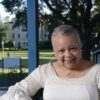 Pushcart Prize nominee Sheryl J. Bize-Boutte is an Oakland multidisciplinary writer. Her autobiographical and fictional short story collections, along with her lyrical and stunning poetry have been described as “rich in vivid imagery,” “incredible,” and “great contributions to literature.” Her first novel, Betrayal on the Bayou, was published in June 2020. She is also a popular literary reader, presenter, storyteller, curator and emcee for local events.
Pushcart Prize nominee Sheryl J. Bize-Boutte is an Oakland multidisciplinary writer. Her autobiographical and fictional short story collections, along with her lyrical and stunning poetry have been described as “rich in vivid imagery,” “incredible,” and “great contributions to literature.” Her first novel, Betrayal on the Bayou, was published in June 2020. She is also a popular literary reader, presenter, storyteller, curator and emcee for local events. Fourth-generation native San Franciscan, Kathleen Archambeau, is an award-winning writer and LGBTQ activist. She is author of four nonfiction works, Climbing the Corporate Ladder in High Heels (2006), “Seized,” an essay in The Other Woman (2007), edited by Victoria Zackheim, Pride & Joy (2017), and We Make It Better (2019), with gay dad, Eric Rosswood. Academy Award-winning screenwriter, Dustin Lance Black wrote the Foreword to Pride & Joy and endorsed We Make It Better. Archambeau’s work has been favorably reviewed in global and national literary publications and she has been a featured speaker at national and global Pride literary events. Her book was included as part of the Oakland Museum of California store’s Queer California Exhibit and she is a founding member of the James Hormel LGBT wing of the SF Public Library.
Fourth-generation native San Franciscan, Kathleen Archambeau, is an award-winning writer and LGBTQ activist. She is author of four nonfiction works, Climbing the Corporate Ladder in High Heels (2006), “Seized,” an essay in The Other Woman (2007), edited by Victoria Zackheim, Pride & Joy (2017), and We Make It Better (2019), with gay dad, Eric Rosswood. Academy Award-winning screenwriter, Dustin Lance Black wrote the Foreword to Pride & Joy and endorsed We Make It Better. Archambeau’s work has been favorably reviewed in global and national literary publications and she has been a featured speaker at national and global Pride literary events. Her book was included as part of the Oakland Museum of California store’s Queer California Exhibit and she is a founding member of the James Hormel LGBT wing of the SF Public Library. Michael Larsen co-founded Larsen-Pomada Literary Agents in 1972. Over four decades, the agency sold hundreds of books to more than 100 publishers and imprints. The agency has stopped accepting new writers, but Mike loves helping all writers. He gives talks about writing and publishing, and does author coaching. He wrote How to Write a Book Proposal and How to Get a Literary Agent, and co-authored Guerrilla Marketing for Writers. Mike is co-director of the San Francisco Writers Conference and the San Francisco Writing for Change Conference.
Michael Larsen co-founded Larsen-Pomada Literary Agents in 1972. Over four decades, the agency sold hundreds of books to more than 100 publishers and imprints. The agency has stopped accepting new writers, but Mike loves helping all writers. He gives talks about writing and publishing, and does author coaching. He wrote How to Write a Book Proposal and How to Get a Literary Agent, and co-authored Guerrilla Marketing for Writers. Mike is co-director of the San Francisco Writers Conference and the San Francisco Writing for Change Conference. Rose Castillo Guilbault is the author of the highly acclaimed memoir Farmworker’s Daughter: Growing Up Mexican In America. Her essays have been published in dozens of textbooks and anthologies. She also wrote the book The Latina’s Guide to Success In the Workplace. Rose was the first Hispanic columnist for the San Francisco Chronicle; her column “Hispanic USA” was honored by a number of journalistic and community organizations. A longtime television journalist, she was awarded an EMMY for her work. Ms. Castillo Guilbault was featured in the award-winning book Latinas and Their Muses. Her community activities include Chair of the Commonwealth Club of California’s board of directors and serving as a judge on the Book Awards Committee for several years.
Rose Castillo Guilbault is the author of the highly acclaimed memoir Farmworker’s Daughter: Growing Up Mexican In America. Her essays have been published in dozens of textbooks and anthologies. She also wrote the book The Latina’s Guide to Success In the Workplace. Rose was the first Hispanic columnist for the San Francisco Chronicle; her column “Hispanic USA” was honored by a number of journalistic and community organizations. A longtime television journalist, she was awarded an EMMY for her work. Ms. Castillo Guilbault was featured in the award-winning book Latinas and Their Muses. Her community activities include Chair of the Commonwealth Club of California’s board of directors and serving as a judge on the Book Awards Committee for several years.
 Editor “Grows” Food and Authors
Editor “Grows” Food and Authors Self-Proclaimed “Political Junkie” Reveals Her Writing Secrets
Self-Proclaimed “Political Junkie” Reveals Her Writing Secrets GS: Thanks. My interest in writing started with an awareness of news and politics. My grandmother was a Holocaust survivor in that she realized early on things were going downhill for the Jews in Poland. She left before it got really bad and tried to convince her siblings to come with her to the states. They thought she was over reacting and hence were killed by the Nazis. She taught me early on to pay attention to the government because things can get very bad and you need to be alert. My mother was a political junkie and she taught me the same lessons.
GS: Thanks. My interest in writing started with an awareness of news and politics. My grandmother was a Holocaust survivor in that she realized early on things were going downhill for the Jews in Poland. She left before it got really bad and tried to convince her siblings to come with her to the states. They thought she was over reacting and hence were killed by the Nazis. She taught me early on to pay attention to the government because things can get very bad and you need to be alert. My mother was a political junkie and she taught me the same lessons.  By Debra Eckerling, author of
By Debra Eckerling, author of  I learned about “To Write” lists from best-selling author Natalie Goldberg, of Writing Down the Bones fame. As I sat in the classroom at Mabel Dodge Luhan House in Taos, New Mexico, I watched her pick up her writing journal, flip to the back, and show us a list of scrawled topics she’d penned on the final page. She carried a notebook everywhere and jotted ideas on the back page as they occurred to her. “If I’m stuck, I look at these,” she said.
I learned about “To Write” lists from best-selling author Natalie Goldberg, of Writing Down the Bones fame. As I sat in the classroom at Mabel Dodge Luhan House in Taos, New Mexico, I watched her pick up her writing journal, flip to the back, and show us a list of scrawled topics she’d penned on the final page. She carried a notebook everywhere and jotted ideas on the back page as they occurred to her. “If I’m stuck, I look at these,” she said. WNBA-the National Organization
WNBA-the National Organization 
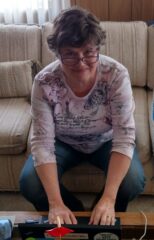 Nita Sweeney is co-author with Brenda Knight of the writing journal,
Nita Sweeney is co-author with Brenda Knight of the writing journal, 
 Suzanne Pederson released Bend in the Circle in October 2020. A women’s fiction/contemporary romance about an American military couple in Germany who navigate the aftermath of rape in the 1980s.
Suzanne Pederson released Bend in the Circle in October 2020. A women’s fiction/contemporary romance about an American military couple in Germany who navigate the aftermath of rape in the 1980s. WNBA-SF past president Kate Farrell
WNBA-SF past president Kate Farrell
 The New York Times Magazine recently described Ellery Akers’ new poetry book,
The New York Times Magazine recently described Ellery Akers’ new poetry book, Sheryl J. Bize-Boutte‘s short story “The Last Collard Green” will be published in the upcoming Colossus:Home anthology. Slated for summer 2020 release, all proceeds will be donated to Oakland’s Moms4Housing.
Sheryl J. Bize-Boutte‘s short story “The Last Collard Green” will be published in the upcoming Colossus:Home anthology. Slated for summer 2020 release, all proceeds will be donated to Oakland’s Moms4Housing. WNBA-SF past president Kate Farrell released her storytelling book June 16th, Story Power: Secrets to Creating, Crafting, and Telling Memorable Stories. She’s had both online and in-person events, with more to come.
WNBA-SF past president Kate Farrell released her storytelling book June 16th, Story Power: Secrets to Creating, Crafting, and Telling Memorable Stories. She’s had both online and in-person events, with more to come. B. Lynn Goodwin had a piece on journaling posted on the
B. Lynn Goodwin had a piece on journaling posted on the  San Francisco Values: Common Ground For Getting America Back On Track, by Geri Spieler and Rick Kaplowitz, published by Palmetto Publishing Group, looks at America’s values and follows how they begin in the Bay Area and then are adopted throughout the rest of the country. While the phrase has garnered some negative responses, in truth, they are America’s values.
San Francisco Values: Common Ground For Getting America Back On Track, by Geri Spieler and Rick Kaplowitz, published by Palmetto Publishing Group, looks at America’s values and follows how they begin in the Bay Area and then are adopted throughout the rest of the country. While the phrase has garnered some negative responses, in truth, they are America’s values. Lisa Braver Moss‘ novel Shrug has won the gold in YA fiction in the 2020 IPPYs, as well as the silver in general fiction in the 2020 IBPA Benjamin Franklin awards.
Lisa Braver Moss‘ novel Shrug has won the gold in YA fiction in the 2020 IPPYs, as well as the silver in general fiction in the 2020 IBPA Benjamin Franklin awards. Joan Gelfand launched her debut novel, Extreme on July 14th, 2020:
Joan Gelfand launched her debut novel, Extreme on July 14th, 2020:  Maxine Schur advanced picture book, Brave with Beauty, was named a 2020 Notable Trade Book in the Field of Social Studies by the Children’s Book Council. Also, her wacky fun alphabet book, Pigs Dancing Jigs will be published in October by Lawley Publishing.
Maxine Schur advanced picture book, Brave with Beauty, was named a 2020 Notable Trade Book in the Field of Social Studies by the Children’s Book Council. Also, her wacky fun alphabet book, Pigs Dancing Jigs will be published in October by Lawley Publishing. Beatrice Bowles’ Spider Grandmother’s Web of Wonders, an illustrated storybook, is out and available in all bookstores.
Beatrice Bowles’ Spider Grandmother’s Web of Wonders, an illustrated storybook, is out and available in all bookstores.

